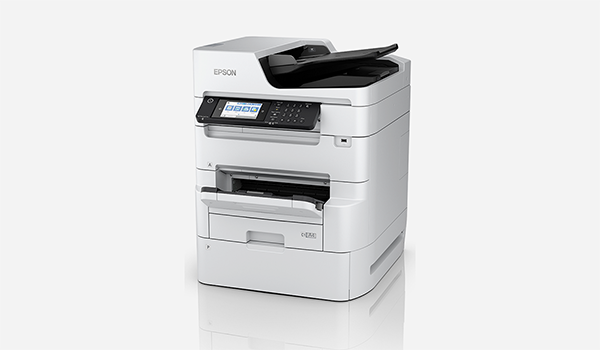Managed Print Services (MPS) are no longer just the domain of big corporates. They’re moving through the market and many mid-sized companies are discovering the advantages of having a specialist provider take care of your print infrastructure and operations.
One of the key benefits of engaging an MPS provider is the sophisticated data analytics they provide. Bringing your print fleet into a centralised MPS system means you can collect and track organisation-wide data that reveals print volume and usage trends across your company.
This replaces outdated silo management, where each department or office within your company was left to manage its own print services, leaving headquarters to foot the bill.
Now, MPS data analytics gives you the opportunity to identify process inefficiencies across your organisation, meaning you can implement a print policy that effectively reduces your print costs while boosting productivity.
MPS providers collect your print volume and usage data through your Multi-Function Printers (MFPs) and import it into a central analytics platform. They then analyse this data to identify where inefficiencies can be eliminated and processes can be improved so you can implement, track and enforce an organisation-wide print policy.
Here are seven ways you can use MPS data analytics to optimise your print services.
1.Reveal process inconsistencies
Comparing print usage data between your in-house departments or across different office locations can reveal print-process inconsistencies throughout your business. Assessing usage patterns will put the spotlight on any areas of your business that are failing to adhere to your print policy. Eliminating these inconsistencies can help plug any efficiency black holes that are unnecessarily draining your print budget.
2. Optimise and automate workflows
High print volumes usually indicate a reliance on manual work processes. Analysing department-specific print data will reveal which of your business units have the highest print output. Investigating why print volumes are high within certain departments can help you identify opportunities to automate manual processes and optimise workflows to increase productivity
3. Eliminate preventable costs
There are many preventable costs associated with your print services and reducing these goes hand in hand with optimising your workflows. MPS data will reveal a clear picture of exactly how much you are spending on printing hardware and consumables like toner, ink and paper. Reviewing this data in a central management system makes it much easier to track and assess your spending and will inform your organisation-wide document management process. This will prevent your print services falling into inefficient – and potentially expensive – silo management
4. Reduce operational costs
While it is possible to eliminate preventable costs, there are some key operational costs that will remain part and parcel of your managed print services. However, you can still work to reduce them. MPS data will reveal your print usage patterns, and assessing these patterns makes your operational printing costs more predictable. For example, tracking your print usage data means you can keep fewer consumables in stock, while automated order alerts will tell you when it’s time to restock
5. Prevent downtime
On the flip side, monitoring print volumes will also ensure your devices remain stocked with toner and paper, and prevent printer downtime while you wait for your new consumables order to arrive. Tracking volume data also allows you to set service and maintenance alerts, which will help extend your print hardware’s operational life
6. Consolidate your hardware
MPS data can also help you consolidate your print hardware. When you engage an MPS provider, they will most often conduct an initial audit of your existing hardware versus your current print needs. This means you may be able to sell off superfluous hardware and continuing to monitor your print data as your business grows will reveal when new hardware is required – so you won’t overspend on unnecessary equipment. Tracking your usage data can also reveal opportunities to replace outdated hardware with more efficient devices
7. Reduce your carbon footprint
As climate-change concern grows, more customers are looking for companies that are environmentally responsible. Analysing MPS data is not only about increasing productivity and reducing costs. It is also a vital tool to help you reduce your company’s carbon footprint. Your print data will reveal where you can reduce paper and toner usage, and whether you can consolidate hardware to reduce the amount of energy your company uses.
Your print services should not be a set-and-forget proposition or left to ad-hoc management by individual business units or departments. Rather, collecting MPS data in a central management platform and regularly analysing it will reveal print inefficiencies across your business, while also identifying opportunities to reduce costs, boost productivity and improve your overall performance.
Source: empowers.brother.com.au 25 May 2018












